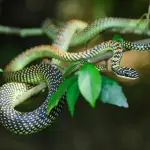Lyme Disease is affecting many millions of people. Originating from a simple tick bite, it invades one’s body and wreaks all kinds of havoc. The Lyme bacteria (Borrelia burgdorferi) is able to invade at the subcellular level and “hide.” The result is, at a minimum, extreme fatigue, but in time, many bodily organs can also be affected.
Those of you out there who have suffered from it know what I mean, and I need not inform you of anything. But I’d like to share how I got rid of Lyme in myself, so as to potentially help many others to be spared a lot of misery. My symptoms were primarily fatigue and becoming winded at the slightest exercise. I think it may have exacerbated my existing ulcer and caused new digestive-related symptoms (I have another success story there that I also shared).
Just from my own research, I discovered four treatments: all significantly successful (though I couldn’t verify one of them by itself). On 15 October 2021 I started on a supplement with 12 herbs / plants called Tick Immune Support by Zenmen. It costs only $35 for about a month’s treatment. Eight of the herbs in this supplement were clinically supported (study led by a scientist from Johns Hopkins University) and shown to be at least as effective as the usually prescribed antibiotic doxycycline.
In the first three days (especially starting on Day 2) I felt wonderful. Virtually all of my symptoms had rather dramatically disappeared: fatigue, joint aches, becoming very tired at 10 PM: about four hours before my usual cycle, rapid heartbeat shortly after the onset of just about any physical activity. . . .*Starting on Day 4, however, I began noticing a slowly increasing recurrence of symptoms. This was not unexpected and is a well-known phenomenon related to Lyme Disease treatment and other similar conditions, called the Jarisch–Herxheimer reaction (or “herxing” in popular usage). It was first observed and identified in 1895 and 1902 by the two German doctors for whom it is named.
*Herxing is the body’s reaction to the “die-off” of the bacterium Borrelia burgdorferi, that causes Lyme, brought on initially by a tick bite. The good news for me is that my main symptom is fatigue, and sometimes momentarily dizziness. A good treatment actually kills the bacteria within a day or two, but it is the “die-off” that makes one feel miserable. Herxing is not technically a side effect; it is the reaction of the body to the harmful bacteria being killed by the supplements.*My herxing, as it turned out, lasted 29 days: from 18 October till 15 November. This is longer than usual, and indicates a chronic condition; though I think it has been chronic in me for a relatively short time, so that I am confident I can knock it out. According to my reading and research, it usually sets in on Day 3 or Day 4. Sure enough it did. I also read that in chronic cases, the worst period is about a month after serious treatment. That came true, too.*I have my usual energy during late evenings again (being a night person), — and in the morning when I get up — whereas all during herxing I was “conking out” around 10 PM or even earlier on some nights. That is completely abnormal for me. My sleeping has stabilized again. I was going to bed at 10 PM but then waking up at 2 or 3 and staying awake several hours.
*
*
Because of the stomach problems, I set out yet again to find a different natural medicine. After some online research, I discovered Cryptolepis Sanguinolenta (aka Ghanaian Quinine) and purchased it from Amazon about five weeks ago. This not only claims to treat the symptoms of Lyme, but to knock it completely out of one’s system. Despite the liquid tasting like a mixture of furniture polish and transmission fluid (I drank it in grape juice), it seems to have done exactly that for me, after maybe two weeks of taking it. Again, unfortunately I felt I had to stop taking it because of significantly worsening stomach symptoms. But I have had no Lyme symptoms to speak of since, so it seems to have lived up to its claims.
There are a number of articles online about its effectiveness. The Frontiers Science News website reported in an article on 21 February 2020 on a successful study from Johns Hopkins University:
The researchers show[ed] that plant extracts from black walnut, cat’s claw, sweet wormwood, Mediterranean rockrose, and Chinese skullcap had strong activity against B. burgdorferi, outperforming both tested antibiotics.
But by far the strongest performers were Ghanaian quinine (Cryptolepis sanguinolenta; also known as yellow-dye root, nibima, or kadze) and Japanese knotweed (Polygonum cuspidatum).
Ghanaian quinine is a shrub from West Africa containing the antimicrobial alkaloid cryptolepine, and is used in ethnomedicine to treat malaria, hepatitis, septicemia, and tuberculosis. Japanese knotweed is a traditional medicine in India and China that contains the polyphenol resveratrol. In other preclinical studies it has been found to have anti-tumor and anti-inflammatory effects and protect the nervous system and heart. Extracts from both plants were found to kill microcolonies of Borrelia burgdorferi and inhibit division of the planktonic form, even at low concentrations (0.03-0.5%). Remarkably, a single 7-day treatment with 1% Ghanaian quinine could completely eradicate the bacterium – it did not regrow, even under optimal conditions in the drug’s absence.
“This study provides the first convincing evidence that some of the herbs used by patients such as Cryptolepis, black walnut, sweet wormwood, cat’s claw, and Japanese knotweed have potent activity against Lyme disease bacteria, especially the dormant persister forms, which are not killed by the current Lyme antibiotics,” says Dr Ying Zhang from the Johns Hopkins Bloomberg School of Public Health.












